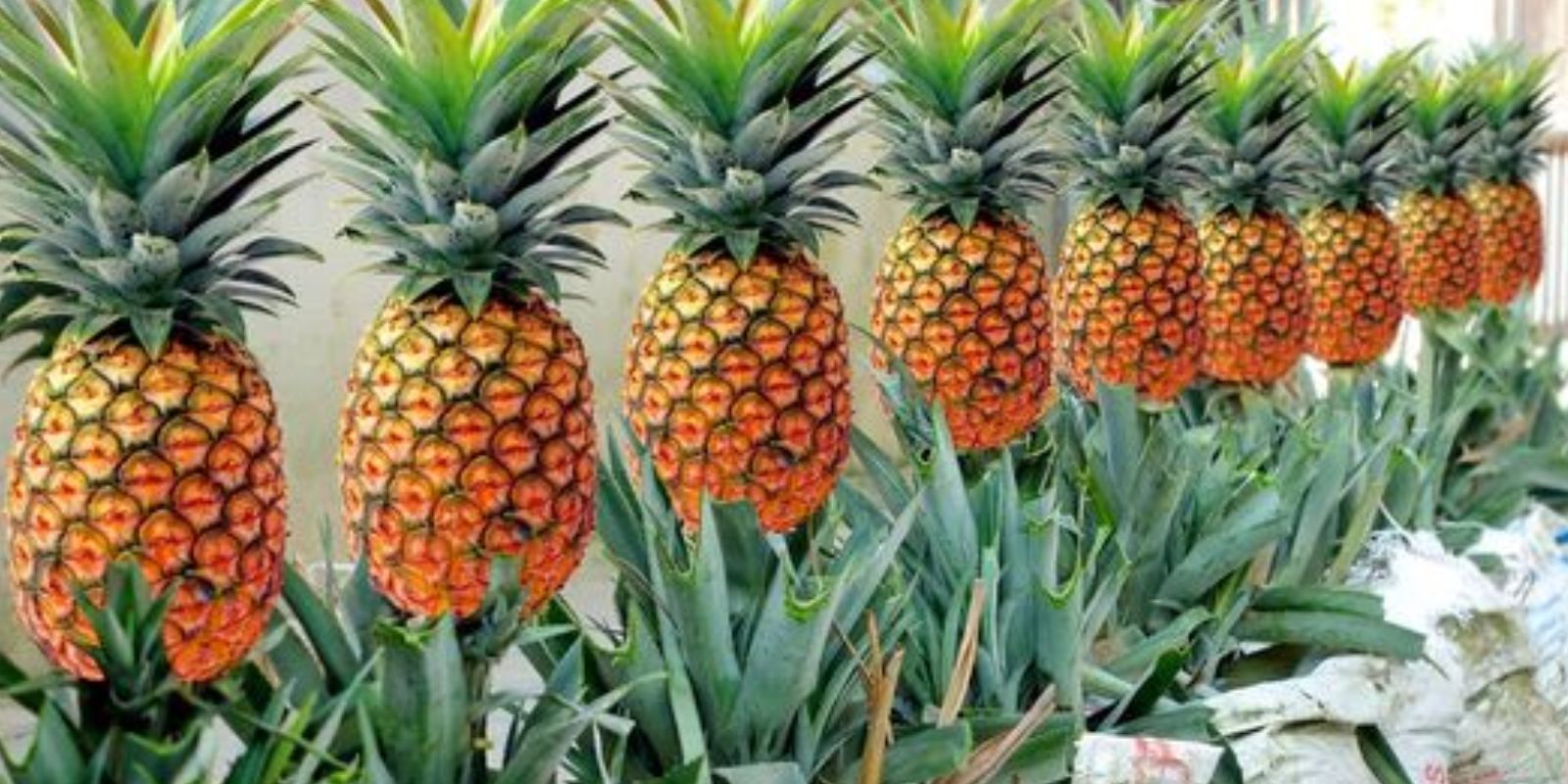Pineapples are a delicious tropical fruit that can be grown in your own home, no matter where you live. Growing giant pineapples in containers is a simple and rewarding process that allows you to enjoy this exotic fruit fresh from your own garden. In this article, we’ll guide you through the steps to grow giant pineapples quickly and easily in containers, ensuring you can achieve a bountiful harvest.
Introduction
Pineapples (Ananas comosus) are a tropical fruit that belongs to the Bromeliaceae family. Known for their sweet and tangy flavor, pineapples are not only a tasty treat but also packed with vitamins, minerals, and antioxidants. While pineapples are traditionally grown in tropical climates, they can be successfully cultivated in containers anywhere in the world with the right care and conditions. Growing pineapples at home is a fun project that can yield impressive results, including giant fruits that you can proudly display and enjoy.
Benefits of Growing Pineapples at Home
- Fresh and Organic: Enjoy fresh, organic pineapples without any chemicals or pesticides.
- Year-Round Harvest: With the ability to grow indoors, you can cultivate pineapples year-round.
- Aesthetic Appeal: Pineapple plants add a tropical touch to your home or garden.
- Cost-Effective: Save money by growing your own pineapples instead of buying them from the store.
Step-by-Step Guide to Growing Giant Pineapples in Containers
1. Select a Healthy Pineapple
The first step to growing giant pineapples is to select a healthy pineapple from the store. Look for a pineapple with green, healthy leaves on the crown. Avoid pineapples with brown or wilted leaves, as these may not produce viable plants.
Tip: Choose a pineapple that is ripe but not overripe. The fruit should be firm, with a sweet aroma.
2. Prepare the Crown
Once you have your pineapple, it’s time to prepare the crown for planting. Twist off the crown from the fruit. If it doesn’t come off easily, you can cut it off with a knife, making sure to leave about an inch of the fruit attached to the crown.
Next, remove the lower leaves from the crown to expose about an inch of the stem. This will help the crown to root more effectively.
3. Root the Crown
Before planting the crown in soil, it’s beneficial to root it in water. Place the prepared crown in a glass of water, ensuring that the exposed stem is submerged. Change the water every few days to keep it fresh and prevent mold growth.
After a few days to a week, you should see roots beginning to form at the base of the crown. Once the roots are about an inch long, the crown is ready to be planted.
4. Prepare the Container
Choose a large container with good drainage for your pineapple plant. Pineapples have a shallow root system, but they need a wide base to support their growth. A container that is at least 12 inches in diameter and 12 inches deep is ideal.
Fill the container with a well-draining potting mix. Pineapples prefer slightly acidic soil, so you can add some peat moss or a commercial cactus mix to the soil to improve drainage and acidity.
5. Plant the Crown
Plant the rooted crown in the prepared container, ensuring that the base of the leaves is just above the soil surface. Firm the soil around the crown to provide stability.
Tip: Pineapples can be sensitive to overwatering, so make sure the container has adequate drainage holes to prevent waterlogging.
6. Water and Sunlight
Place the container in a sunny spot where the pineapple plant can receive at least six hours of direct sunlight each day. Pineapples thrive in warm, sunny conditions, so a south-facing window or a sunny spot in your garden is ideal.
Water the plant regularly, keeping the soil consistently moist but not waterlogged. Pineapples are drought-tolerant once established, but young plants need regular watering to promote healthy growth.
7. Fertilize
To encourage fast and vigorous growth, fertilize your pineapple plant monthly with a balanced fertilizer. A fertilizer with equal parts nitrogen, phosphorus, and potassium is ideal. You can also use a slow-release fertilizer or a liquid fertilizer diluted to half strength.
Tip: Avoid over-fertilizing, as this can lead to excessive leaf growth at the expense of fruit production.
8. Patience and Care
Growing giant pineapples requires patience and consistent care. With proper conditions, your pineapple plant will produce fruit in about 18-24 months. During this time, continue to provide regular water and fertilizer, and monitor the plant for pests and diseases.
Pruning: Remove any dead or damaged leaves to keep the plant healthy and encourage new growth.
Transplanting: If the plant outgrows its container, you may need to transplant it to a larger pot or directly into your garden if the climate allows.
9. Harvesting
You’ll know your pineapple is ready to harvest when it turns golden yellow and emits a sweet aroma. To harvest, simply twist the fruit from the plant. Enjoy your giant home-grown pineapple fresh or use it in your favorite recipes.
Tips for Success
- Climate Control: If you live in a cooler climate, bring the plant indoors during the winter months to protect it from frost.
- Pest Management: Keep an eye out for common pests such as spider mites and aphids. Use insecticidal soap or neem oil to control infestations.
- Pollination: Pineapples are self-pollinating, but you can hand-pollinate the flowers to ensure fruit set.
Conclusion
Growing giant pineapples at home in containers is a rewarding and enjoyable experience. By following these simple steps and providing the right care, you can cultivate impressive pineapples no matter where you live. Whether you’re a seasoned gardener or a beginner, this method is fast, easy, and guarantees delicious results. Start your pineapple-growing journey today and soon you’ll be enjoying the sweet, tropical taste of home-grown pineapples. Happy gardening! 🌱🍍

